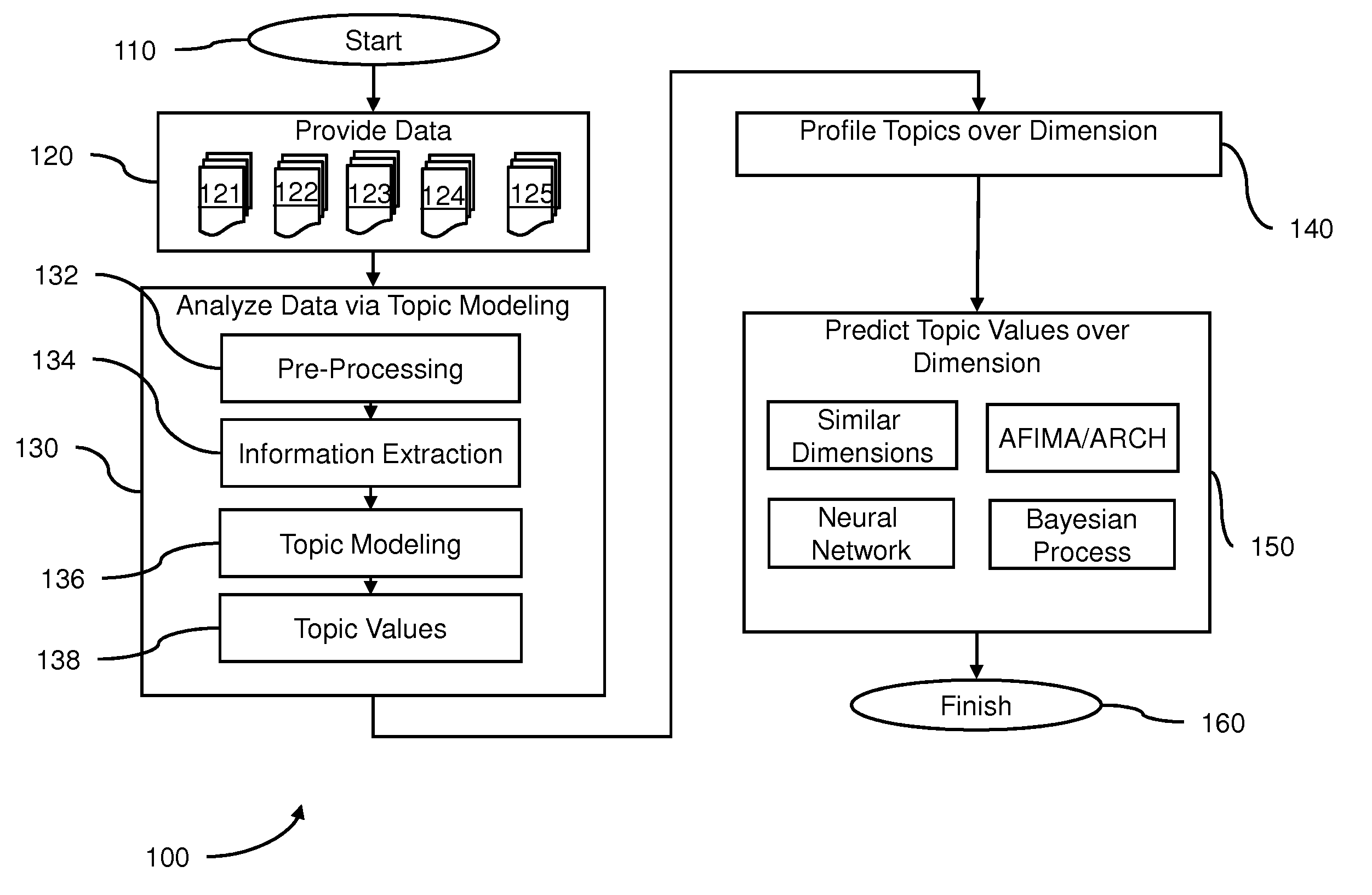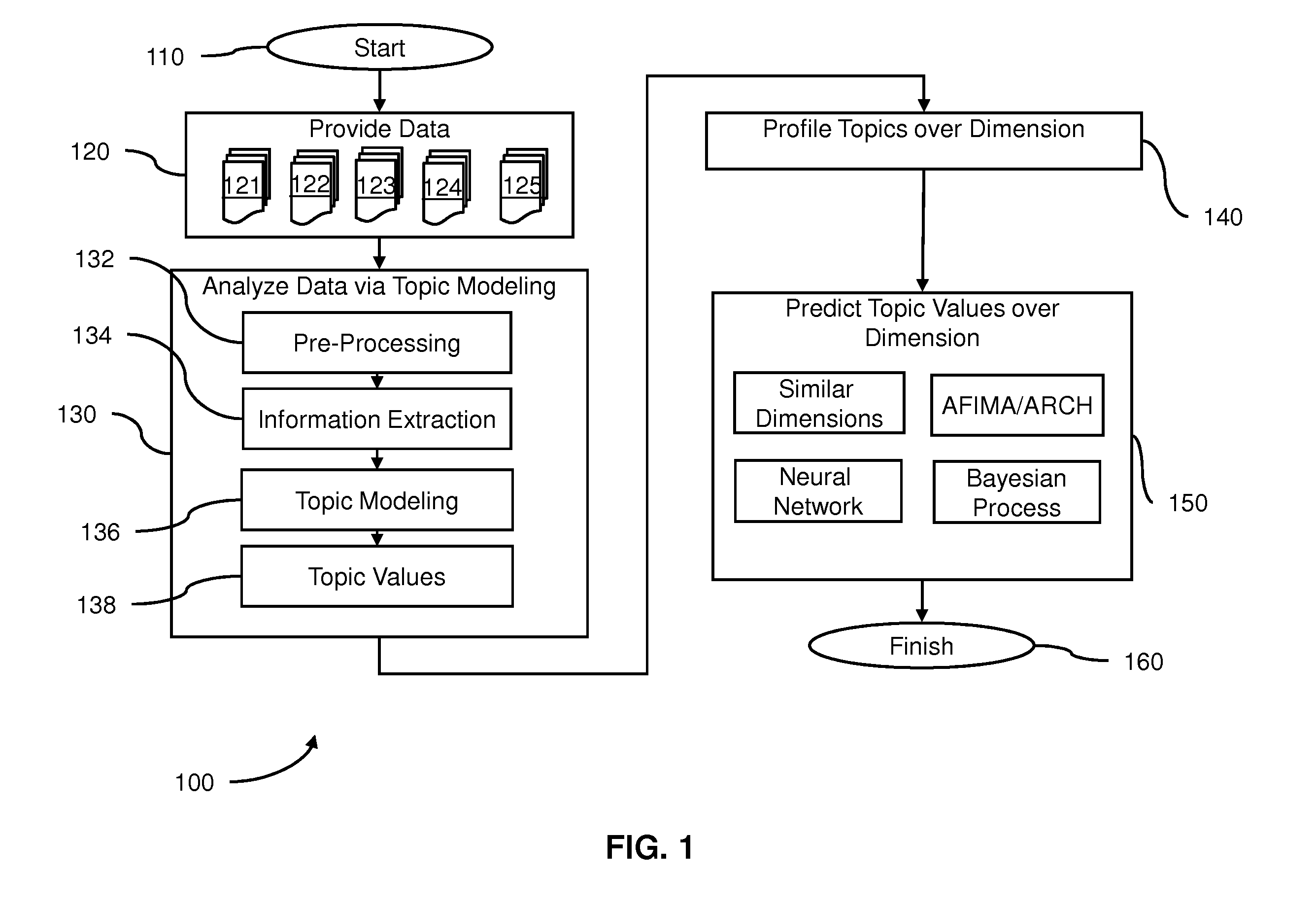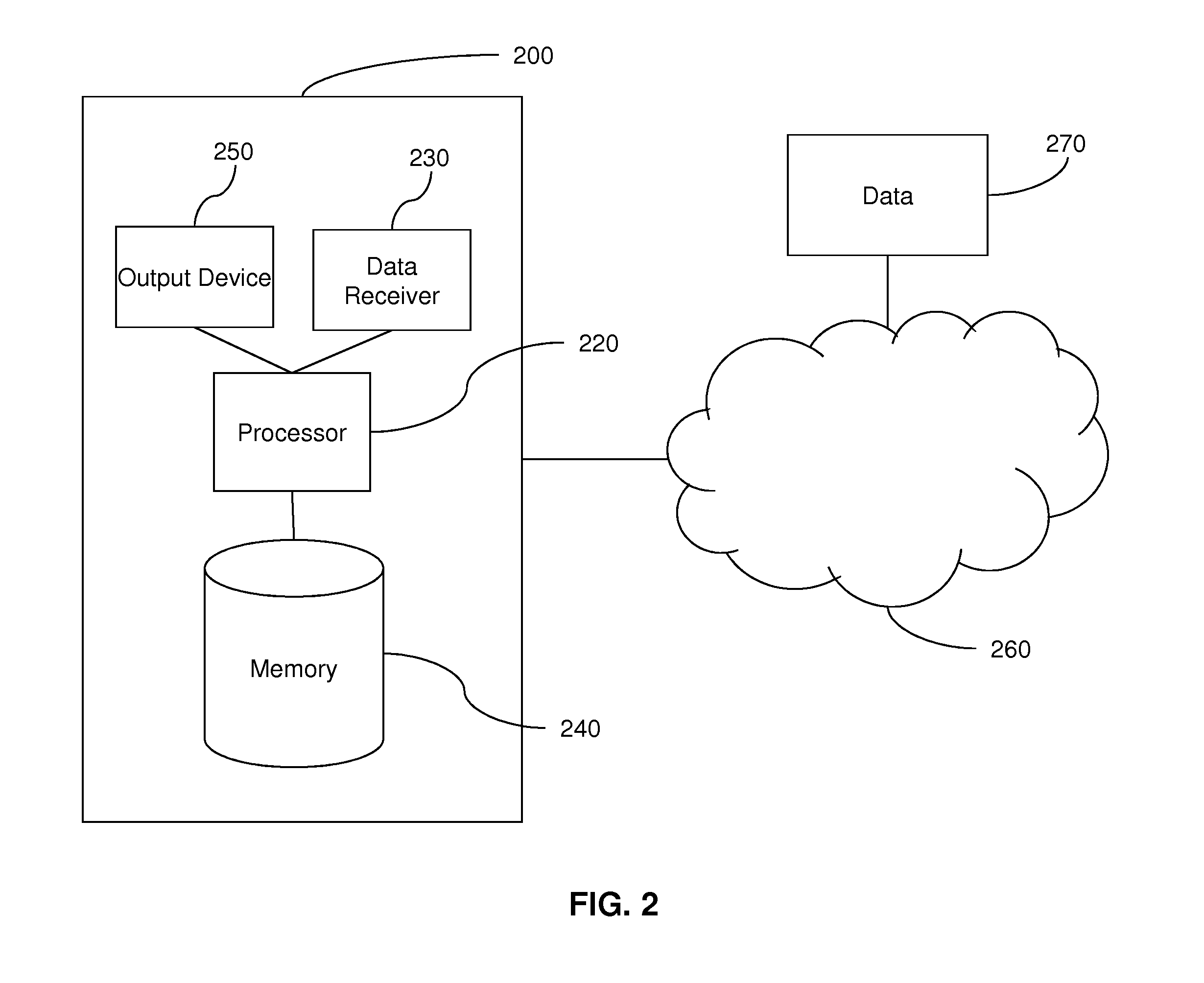Method and system to predict a data value
a data value and method technology, applied in the field of methods and systems to predict the likelihood of data topics, can solve the problems of large amount of manual labor, no further understanding, and complex human behavior, and achieve the effect of reducing the likelihood of a system-based prediction
- Summary
- Abstract
- Description
- Claims
- Application Information
AI Technical Summary
Benefits of technology
Problems solved by technology
Method used
Image
Examples
Embodiment Construction
[0041]The present invention is illustrated by, but by no means limited to, the following description of a preferred embodiment.
[0042]As used throughout this description, topic means a defining characteristic, usually represented as a data element such as a word, of a single feature, activity, subject, behavior, attitude, event or an aggregation of such defining characteristics, each of which may or may not have an associated numerical value. A topic can be a conditional probability of the topic over a set of defining characteristics. As described in detail for some embodiments utilizing words of text as topics, a typical source of topics would be words in articles in a newspaper, though other sources of “text streams” could be used, such as blogs, press releases, intelligence reports, Internet forums, or any other source of text that changes or is updated over time.
[0043]As used throughout this description, a topic value (z) is a data value representing a conditional probability of ...
PUM
 Login to View More
Login to View More Abstract
Description
Claims
Application Information
 Login to View More
Login to View More - R&D
- Intellectual Property
- Life Sciences
- Materials
- Tech Scout
- Unparalleled Data Quality
- Higher Quality Content
- 60% Fewer Hallucinations
Browse by: Latest US Patents, China's latest patents, Technical Efficacy Thesaurus, Application Domain, Technology Topic, Popular Technical Reports.
© 2025 PatSnap. All rights reserved.Legal|Privacy policy|Modern Slavery Act Transparency Statement|Sitemap|About US| Contact US: help@patsnap.com



